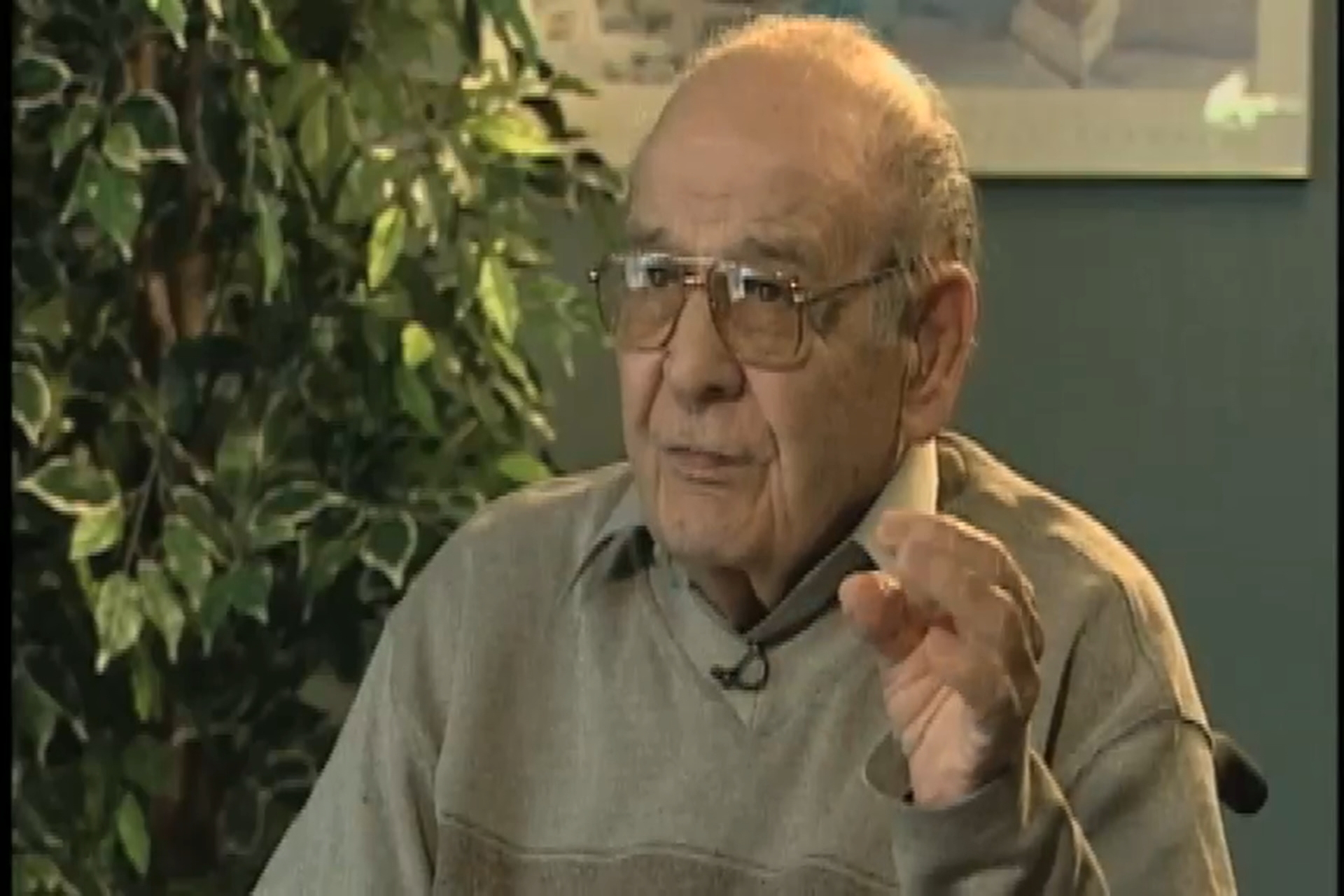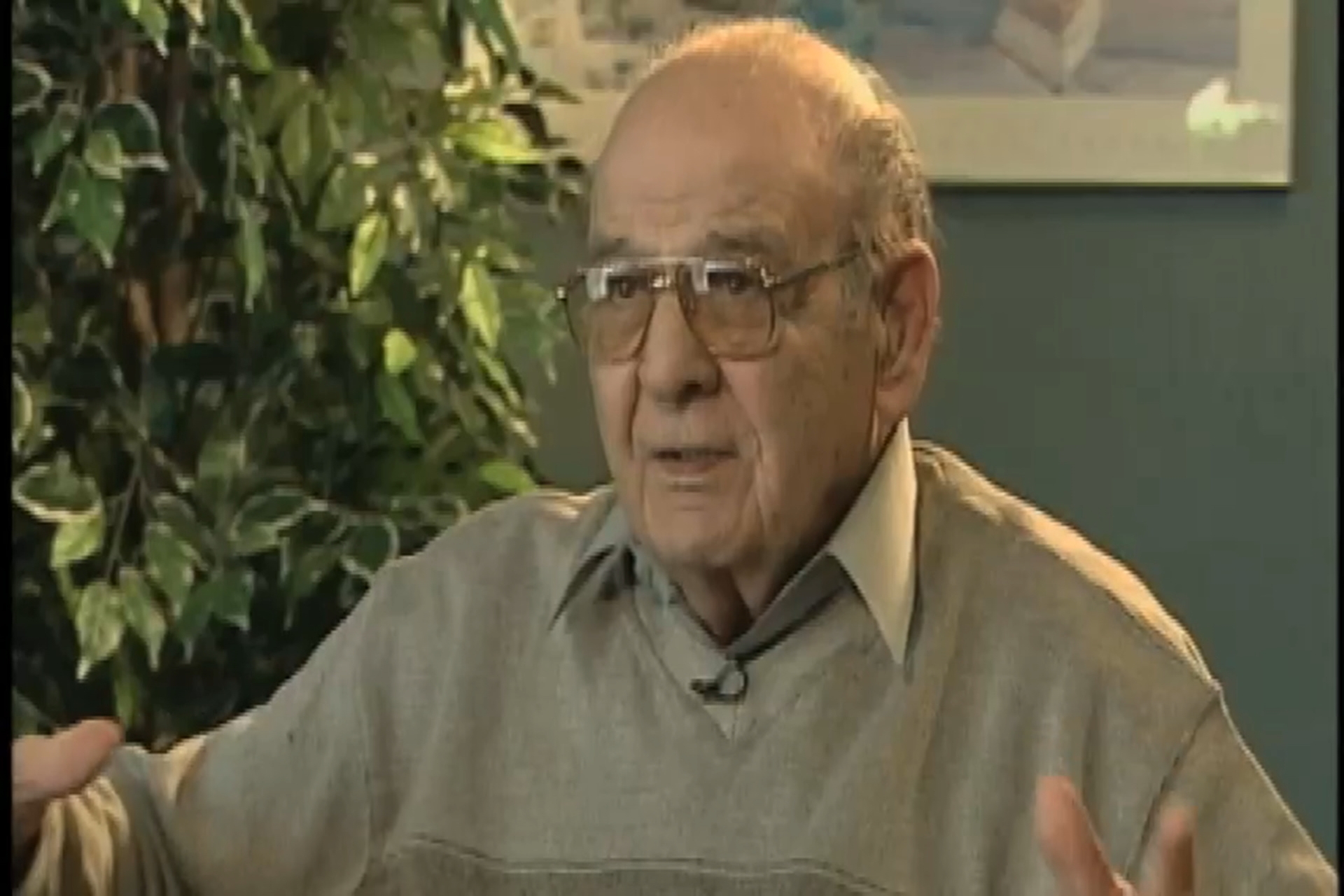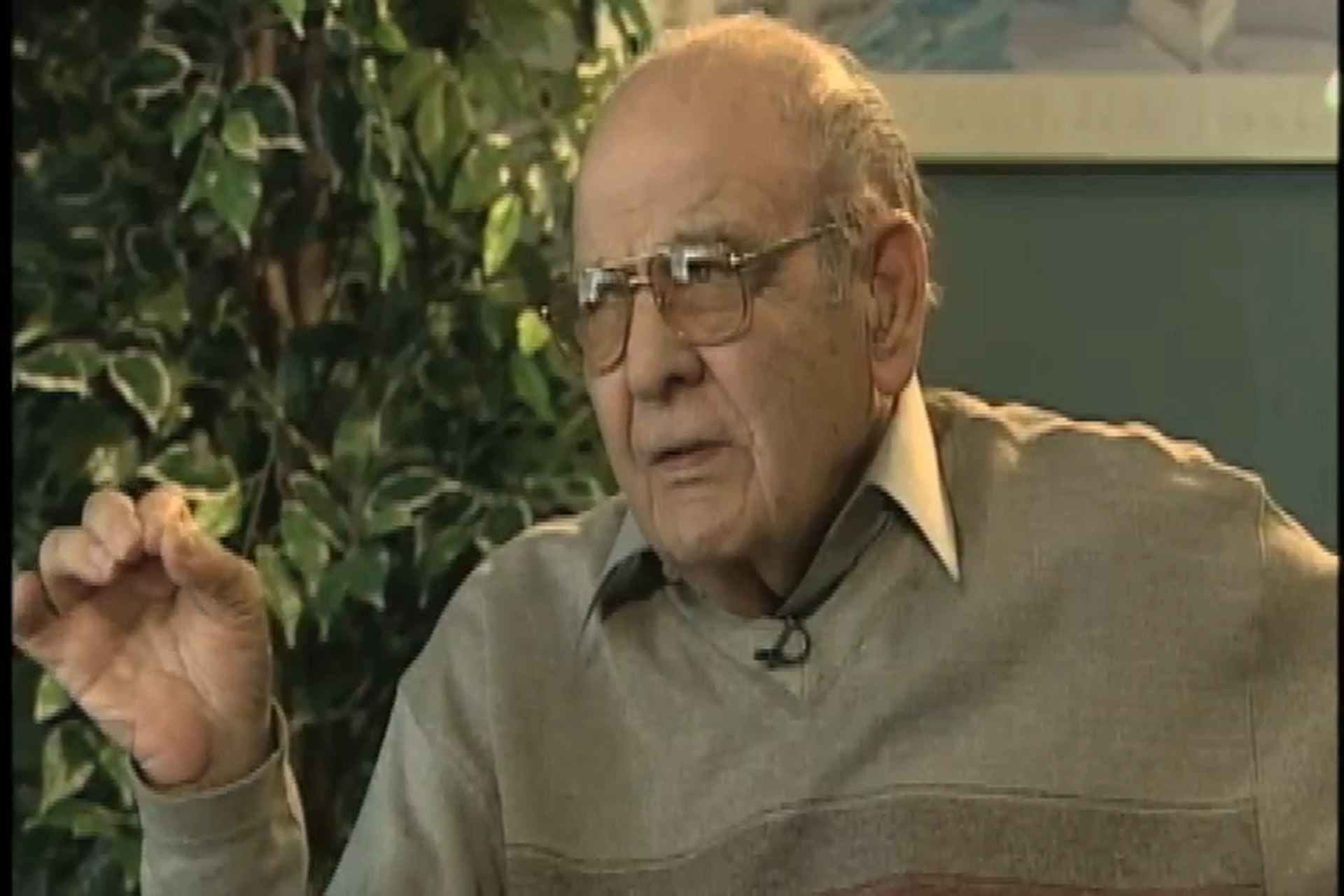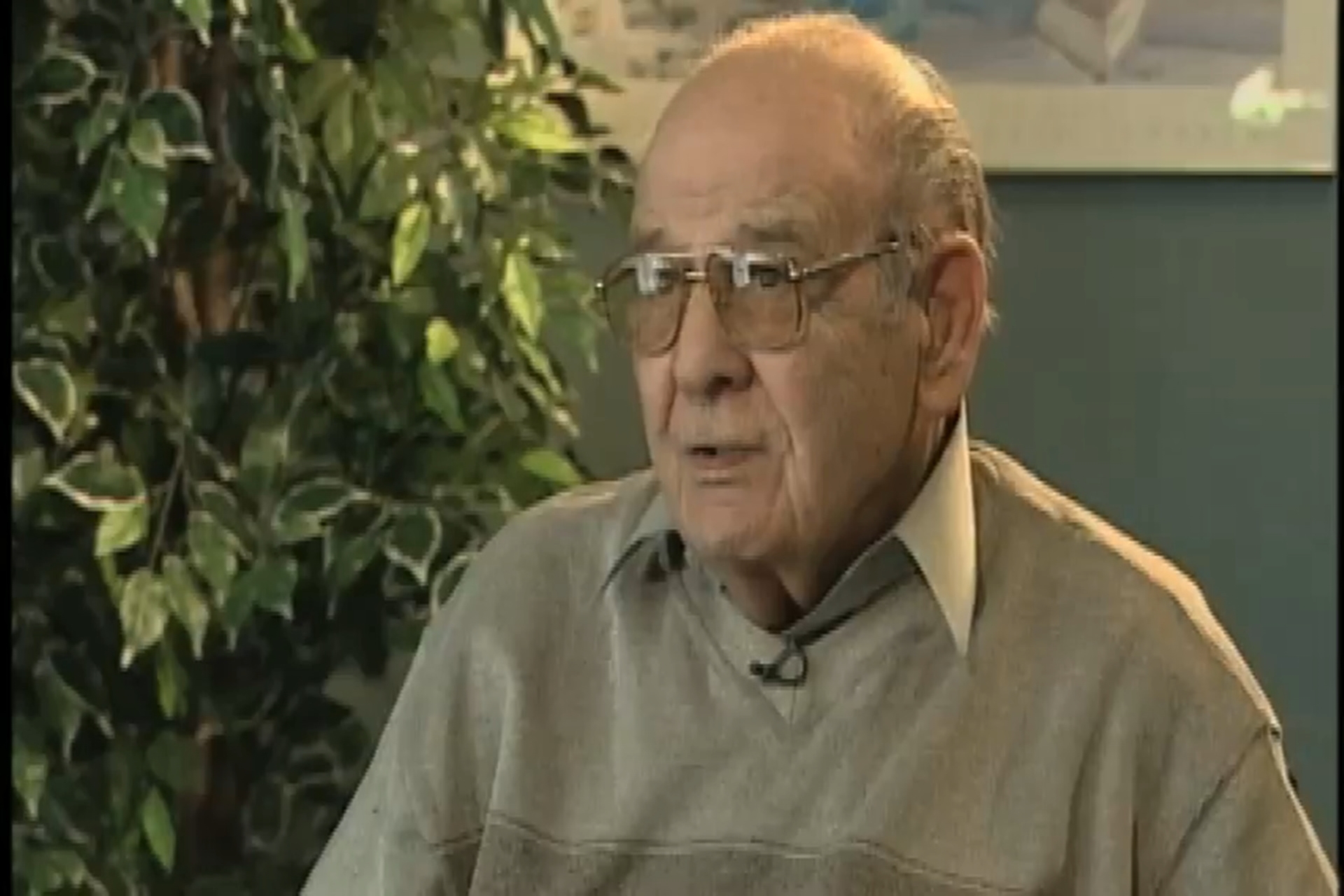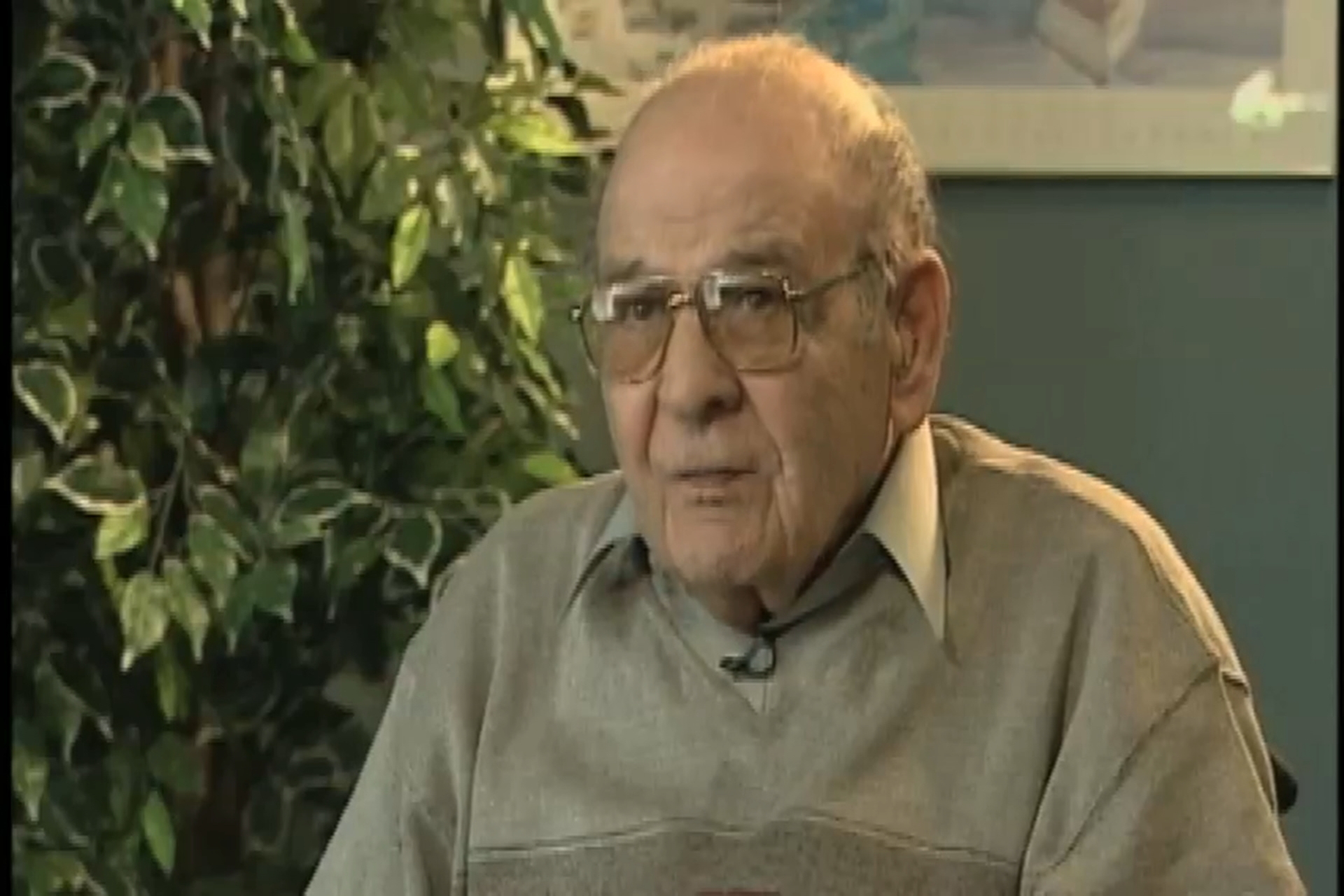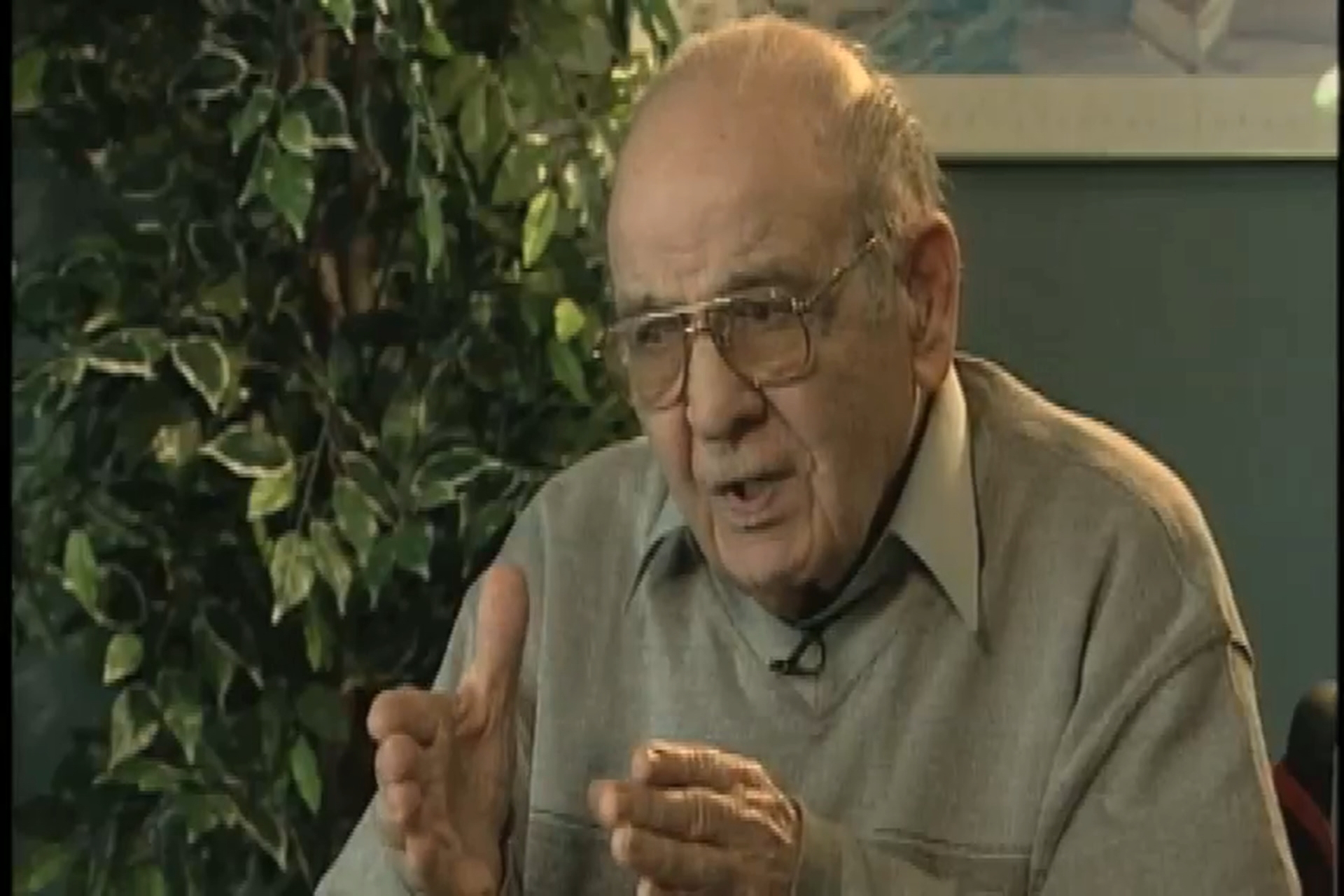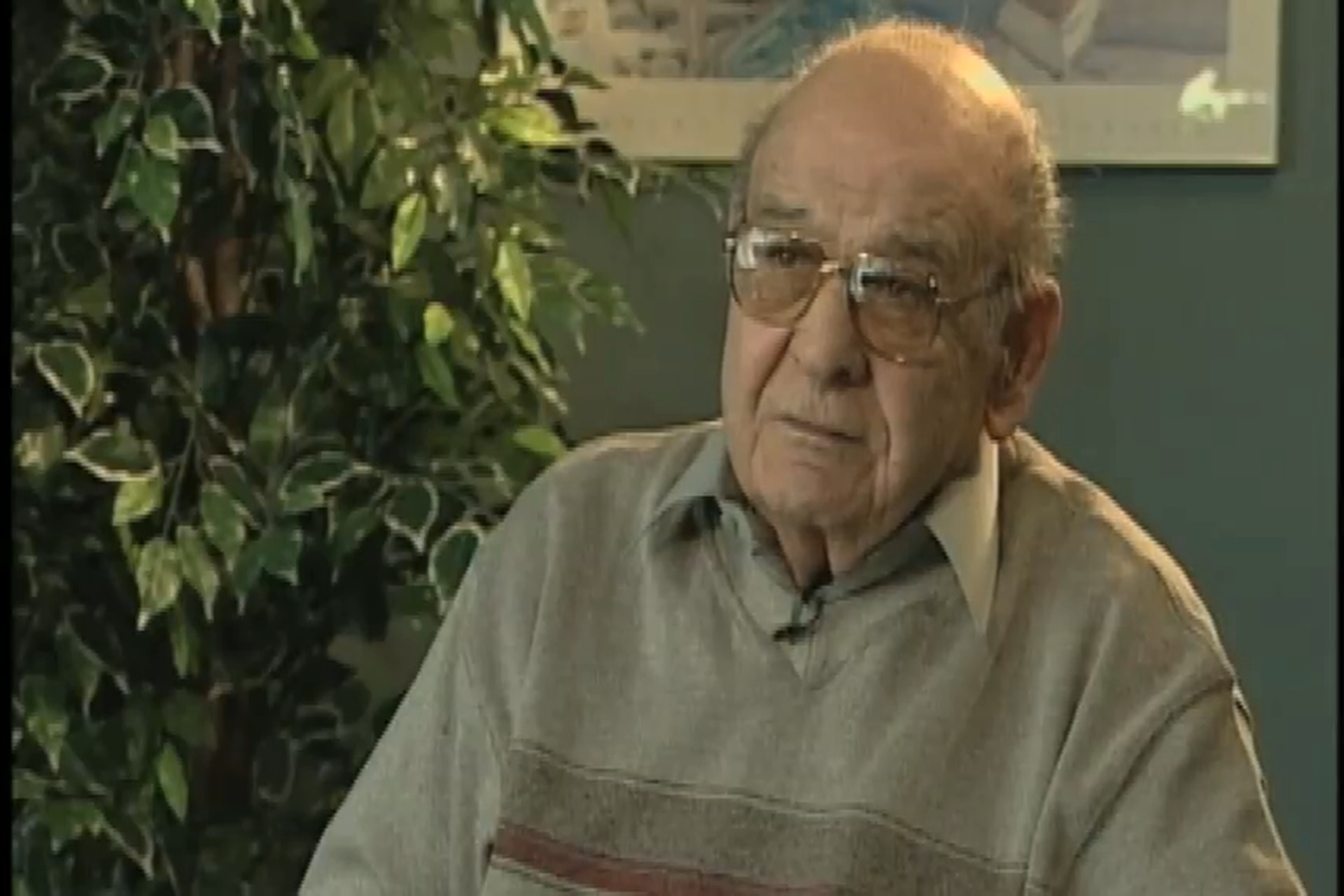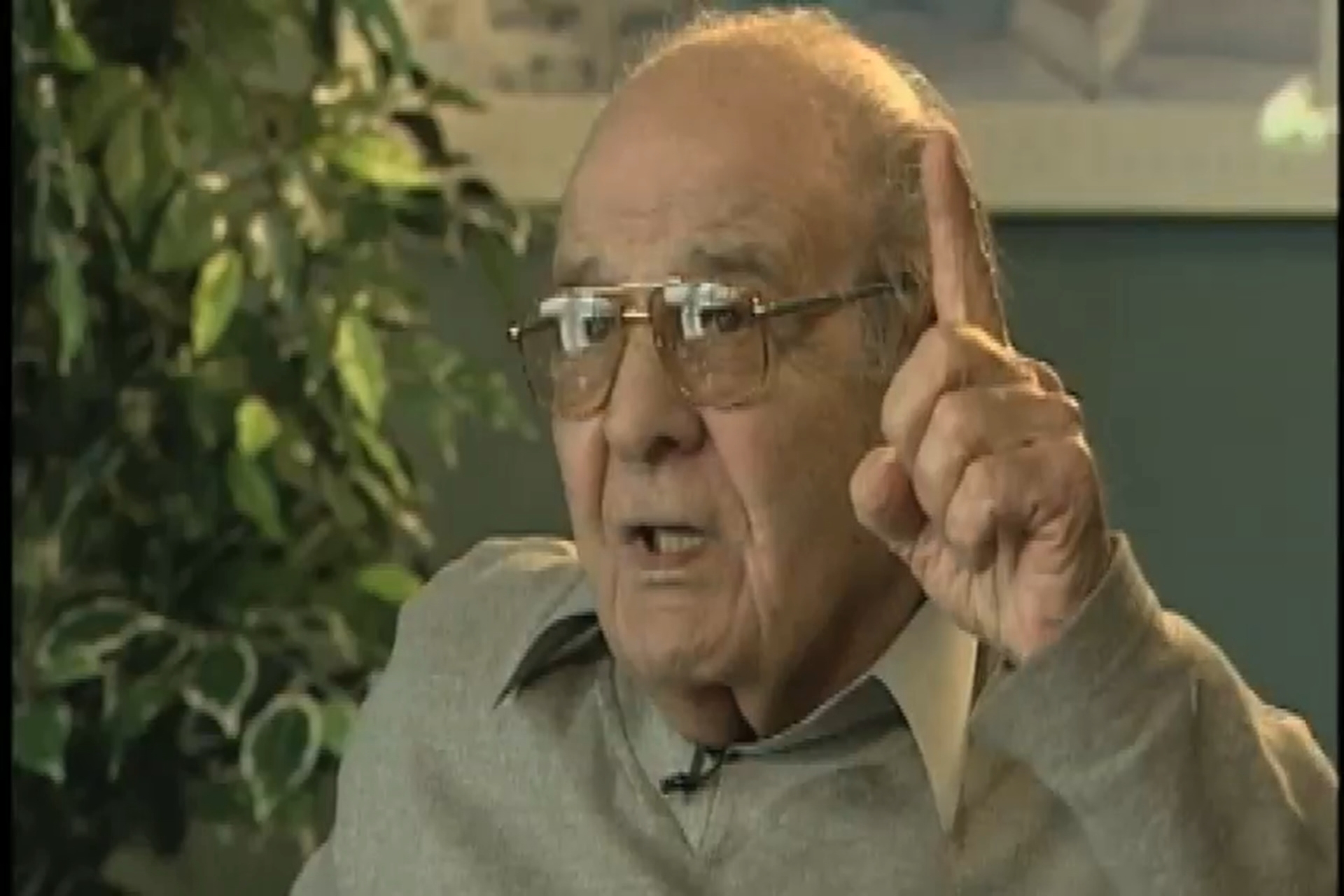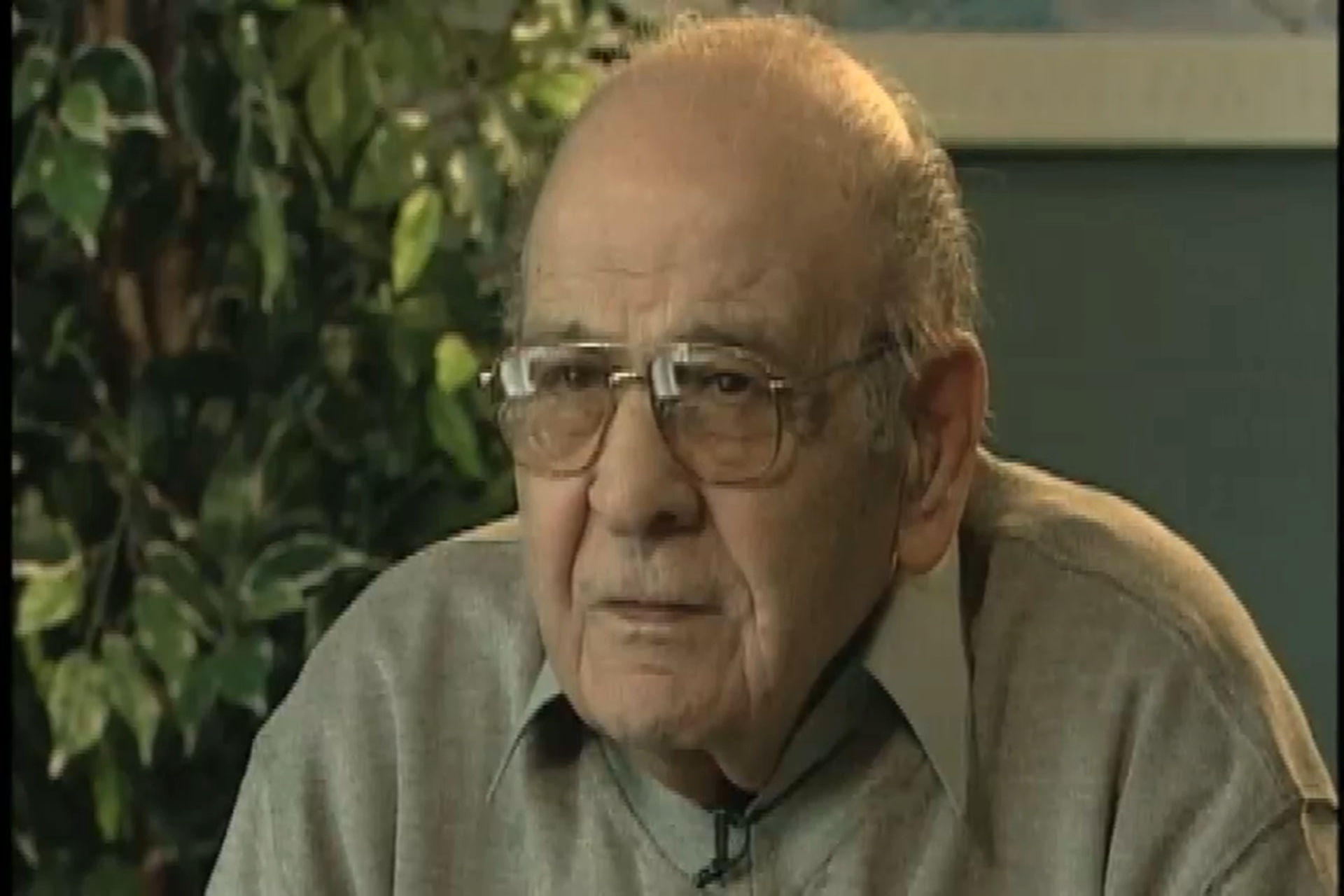Target Practice
Heroes Remember
Target Practice
Transcript
Description
Mr. Abdallah explains the use of a drogue in target practise.
Wilf Abdallah
Mr. Abdallah was born in London, Ontario, in 1923. His father immigrated from Lebanon to the United States at the age of 12 and eventually ended up in London, Ontario, where he was a candy maker and owned a few stores in the area. In 1936 the family moved to Petrolia and then on to Sarnia. Mr Abdallah attended high school in Sarnia before moving back to London in 1939-40. After lying about his age Mr. Abdallah joined the Royal Canadian Air Force when he was seventeen. He went to Toronto for three weeks training at Manning Depot before going to Paulson, Manitoba, to complete his training. In March of 1944 he sailed on the Louis Pasteur to Bournemouth, England, where he was stationed with 129 Airfield. Mr. Abdallah worked with the tactical air force, building airfields and then joined the air force’s return salvage unit. He moved through France, Belgium and Holland recovering aircraft to be repaired or stripped for parts. When Mr. Abdallah returned to Canada after the war he went back to live the rest of his life in London, Ontario.
Meta Data
- Medium:
- Video
- Owner:
- Veterans Affairs Canada
- Duration:
- 02:49
- Person Interviewed:
- Wilf Abdallah
- War, Conflict or Mission:
- Second World War
- Location/Theatre:
- Canada
- Branch:
- Air Force
Related Videos
- Date modified:



